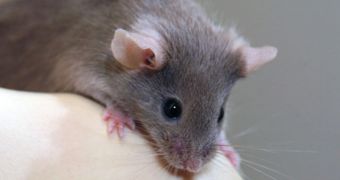For all their potential, stem cells are currently severely underused in all applications, due to the fact that they are very hard to manufacture at clinical grades and in large-enough amounts. Now, a new method developed in the United States could make their widespread use a reality.
What the team did was create an animal-free culture medium for stem cells, by identifying a number of ingredients that eliminate the need to use chemicals and substances derived from pigs or other animals.
Researchers from the University of California in Los Angeles (UCLA), who conducted the study, say that their medium supports long-term regeneration and maintenance of human embryonic stem cells.
HESC are the most potent type of stem cells in the human body. They can be used to create any type of cells and tissue needed, all without any risk of rejection. Stem cells of this type can be used to repair livers, lungs and hearts, investigators say.
With the new medium developed at the university, investigators will be able to handle embryonic stem cells on a single cell level, something which has never been achieved before. The new system of conducting studies in the field is called single-cell passaging.
“The ability to manipulate or handle one cell is critically important for some of the biotechnologies. [Any attempt to] introduce new genes into the stem cell without being able to handle one cell makes the biotechnology process very inefficient,” explains expert Hideaki Tsutsui.
“But, if you can culture cells individually, and expose all the chemical stimuli uniformly to the entire population, it would benefit the manufacturing of those clinically transplantable cells in the future,” the UCLA investigator goes on to say.
Tsutsui holds an appointment as a mechanical engineer at the UCLA Center for Cell Control, and is also one of the lead authors of a new study detailing the findings. The work is published in this week's issue of the esteemed medical journal Nature Communications.
“With animal sera or mouse feeder cells, the quality varies over different batches, so even if you buy the same product, one bottle of serum is different from the other one. So, your cell culture won’t be consistent,” Tsutsui explains of the rationale behind the new investigation.
“Our system successfully removed those feeder cells as well as the serum component of the media so we can have a better understanding, chemically, of what’s going on in the cells,” he details further.
In spite of the new success biotechnology is currently registering, some time will pass before the new medium is used in the lab. According to investigators, it is estimated that hESC produced via the new approach will become available within a decade or so.
“Safety is a major concern, and there are still many issues we have to solve first,” Tsutsui concludes.

 14 DAY TRIAL //
14 DAY TRIAL //